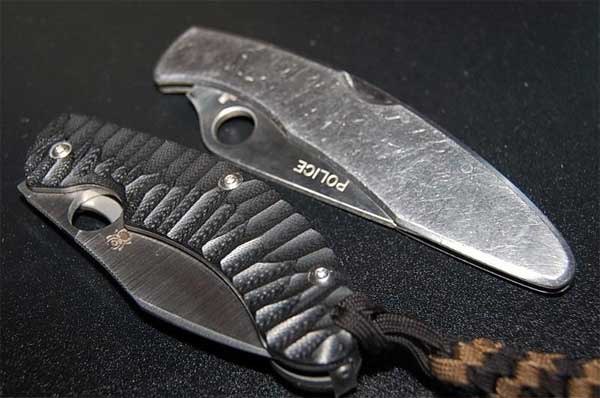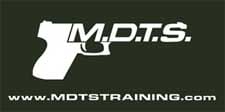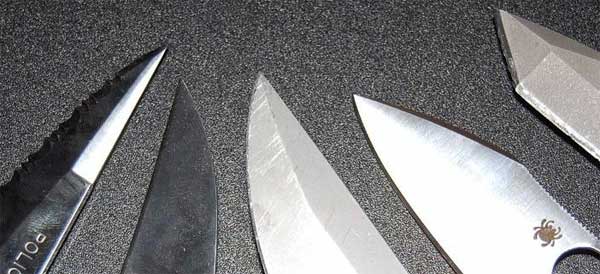Selecting a Folding Knife for Personal Protection
By Chris Fry


Utica, NY –-(Ammoland.com)- Tactical folding knife (TFK) selection for personal protection requires as much thought as choosing a handgun for every day carry (EDC).
In my experience most people just go to a local sporting goods store and pick whatever knife looks cool. This is unfortunate because a TFK or small fixed blade (SFB) can be carried more readily in non-permissive environments than most CCW pistols.
Selection of a TFK for personal protection or on-duty carry should not be a random process and several elements should be taken into consideration.
The folder you choose for personal protection needs to possess a few basic attributes:
1) Strong Lock/Hold Open Mechanism- It is imperative that whatever folder you choose, that it stay open during interpersonal defensive use. You may be thrusting the blade into hard surfaces such as bone which could cause a weak lock to collapse. Various locking mechanisms are available to include traditional lock backs, liner locks, rolling locks, lock-pins, mono-lock and the axis lock. Most commercial grade “Tactical Folding Knives” feature one of these type locks and they are all suitable on a personal protection folder. One caution; carefully test out any lock-back knife if considering it for ElocksDC for personal defense. Depending upon where the lock mechanism is placed along the spine of the folder, one of your fingers could depress the lock causing it to close when gripping the knife tightly such as during a critical life or death situation under extreme stress.
2) Fit in Hand when Closed- Preferably with some impact surface available at the top and bottom. You may have to access the folder while under attack when accessing of the folder is possible but not deployment of the blade. The exposed portion of the folding knife (out the top and bottom of the hand when gripped) can provide an effective impact tool until the blade can be deployed.
3) Tip Up Carry- Look for a folder that allows tip UP carry when in the pocket. This carry method eliminates having to rotate the folder into the hand when drawing from your carry position. Tip down carry requires rotation of the knife in the hand prior to deploying the blade. Under the stresses of a close range confrontation this adds another fine motor skill to the accessing process. This is largely user preference. Dedicated, consistent practice will allow some to access the knife from tip down carry rapidly. Just be aware that possession does not equal proficiency.
4) Robust Opening Mechanism- Research the different opening mechanisms such as the stud, hole, disc, auto opening, wave, assisted opening etc… Some guys (who can own them) love the auto opening knives but remember that under stress you may hit that button and open that knife when you may not want it opened. Waved knives like everything have pros and cons and do require proper training in indexing and deploying the blade.
I recommend the stud mechanism or hole like on a Spyderco or Benchmade TFK. These mechanisms are simple to deploy and will not open without me. Assisted opening knives often compromise the grip on the knife in order to actuate the assist mechanism which could lead to major problems during standing grapple and in-fight weapon access.
5) One Hand Opening- The folder you choose must allow you to open it one handed. During a critical incident your primary or support hand may be tied up fending or striking your opponent. You need to be able to access and deploy your TFK with one hand (either hand) and under the pressure and stress of an attack.
6) Non-Slip Surface -The grip or handle scales should be a non-slip texture such as a checked or stippled surface made of G10, zytel osurfacer ABS plastic. Hands may become covered in sweat or blood making anything you grasp slippery and difficult to retain. No stainless steel or polished wood scales for a personal protection knife if you intend to possibly defend your life with it.
7) Blade Design- Different blade designs offer different advantages. For me, it is more “methodology” driven. If you have trained or follow a school of thought that teaches slashing as a primary defense then a curved or drop point blade may be for you. If you follow a more point driven methodology then a needle-point or tanto type blade design known for penetration is more applicable.
8) Blade Length- Laws can vary greatly depending upon what state, city or county you reside in depending upon who you speak with. For example, NYS law says nothing about blade length. However I have spoken to numerous Law Enforcement Officers and district attorneys from different counties that say four inches is the legal limit. It has also been stated to me that blade length is measured from where the sharpened blade starts or what is referred to as the choil or on a fixed blade where the ricasso ends; essentially the edge or sharpened surface of the blade. Another individual told me blade length is measured from where the “metal starts coming out of the handle” to include the choil and ricasso. What this means is that you could have a 4″ length sharpened edge according to knife manufacturer specifications (which is what manufacturers go by) but when you add the unsharpened choil and ricasso you have 4.25-4.50″ of blade. This may or may not make that knife illegal in your jurisdiction. Because of this obvious lack of clarity or uniformity I recommend folders that are spec’d out at 2.0-3.5 inches for every day carry.
9) Pocket Clip- Finally, when selecting a tactical folding knife careful attention should be paid to the method in which you intend to carry. The most common method found on TFK’s today is the pocket clip. With this clip the TFK can be clipped inside a pant pocket, waistband, shirt lapel or a myriad of other locations. Look for a strong metal clip which can be attached to either side of the knife for left or right hand carry. Some folding knives such as older Cold Steel models first came with plastic clips which were prone to breakage. Choose a knife with a clip that is dark in color, the idea is to remain low profile when carrying any personal protection tool. Some TFK’s come with a bright silver clip which draws attention and/or reflects light. A dark clip will blend in with clothing and not stand out.
Selecting a folding knife for personal protection is a highly individual process. Go to a good cutlery store and handle several knives prior to purchasing. Similar to handguns, a knife that fits my hand and is comfortable for me to carry may not suit your personal likes and needs. Now that you have some information on how to select a folding knife for personal protection a future article will address the next phase of preparation – Efficient carry locations for the personal protection folding knife.

About Chris:
Chris Fry is the owner and director of training and curriculum development for Modern Defensive Training Systems in Utica, N.Y. where he conducts courses in reality driven practical combatives skills, extreme close quarters physical defense, tactical folding knife and edged weapon combatives and combative pistol, carbine and shotgun skills. MDTS offers a variety of courses for responsible citizens, corporations, law enforcement and the U.S. Military with a singular goal of providing up to date, realistic and practical personal protection training. Visit: www.mdtstraining.com
